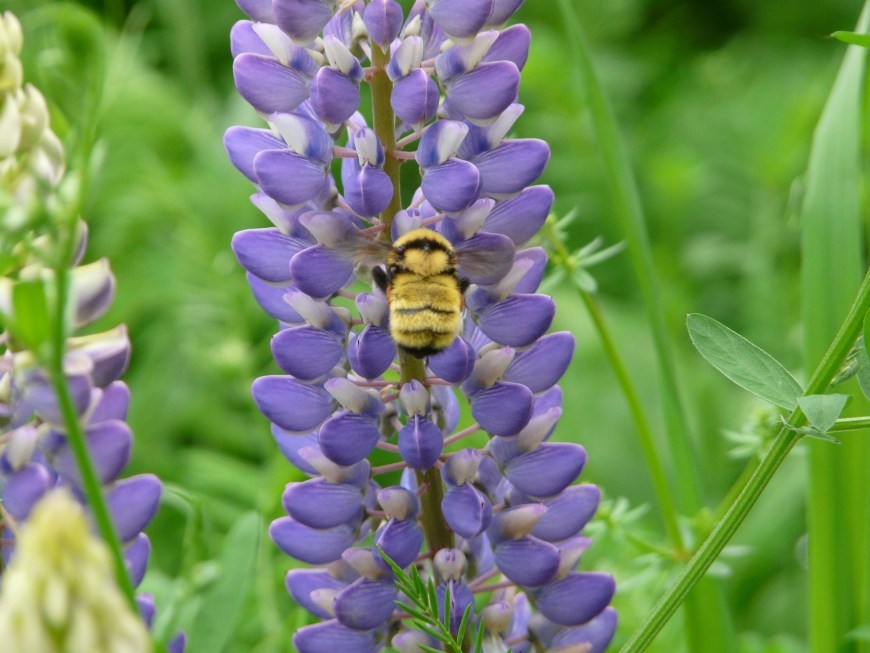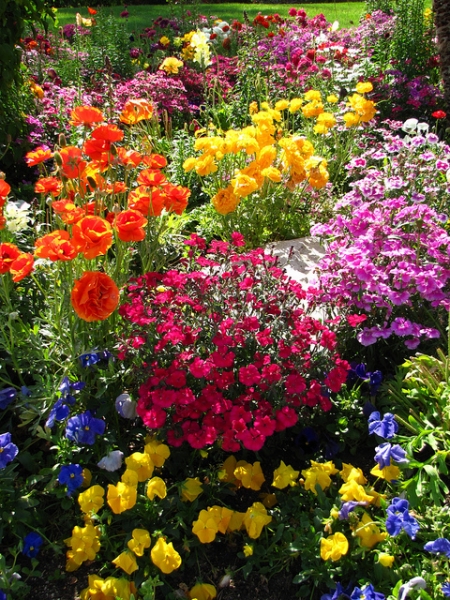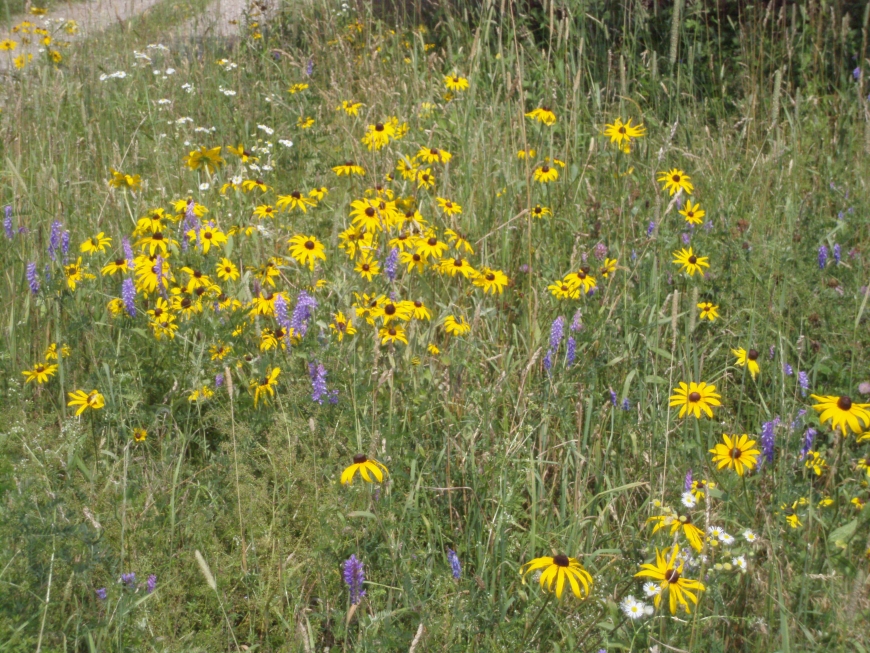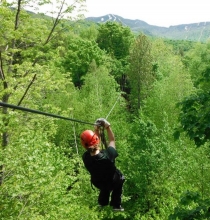


A bumblebee forages on lupine flowers. Photo: Jacob Malcomb
Having a variety of flowers arranged in clusters of color can enhance pollinator diversity. Photo: garden_beth, Flickr Creative Commons
Leaving wildflower resources intact within or surrounding your property can help attract pollinators. Photo: Sam Haab



Planning a Pollinator-Friendly Garden
Bees are key pollinators for a variety of plant species that we rely on for food, medicine, livelihood, and aesthetics. They are obligate pollinators, so their diet of nectar and pollen makes their role in pollination a de facto part of their life. Farmers, gardeners, and all nature lovers alike, should aim to foster a diversity of pollinators in their farms or gardens. Especially in light of the ongoing “pollination crisis” wherein both wild and managed bee populations are being threatened by habitat loss, fragmentation and simplification, climate change, invasive species, and pesticide use, promoting pollinator diversity should be a priority.
Generally, bees require four main provisions to survive and thrive in an area. This includes access to floral resources for forage, accessible nesting areas, sheltered/undisturbed places for hibernation sites, and a landscape free of pesticides. As you're planning your garden this year, consider these tips on how to attract native pollinators to your garden/farm (via the 2011 Xerces Society Guide to Attracting Native Pollinators).
Flowers
Having a wide variety of plants with overlapping blooming times helps to ensure the availability of forage throughout the spring, summer, and early-autumn months. Native bee species vary in their sizes and tongue lengths, which influences which flowers they visit and feed on. Therefore, including a diversity of plants that vary in size, shape, color, and height will help to promote a diversity of pollinators. Planting species to form large clusters or blocks of colored blooms rather than scattered spots of color can also enhance your farm / garden’s attractiveness to pollinators by reducing the amount of energy bees must expend to forage for nectar. Certain low-growing plants such as violets, birdsfoot trefoil, and clovers can provide important forage for pollinators. To promote the growth of such low-growing species, avoid mowing wherever possible or raise the cutting height of your mower blades. Additionally, allowing certain “weedy” species like dandelions and ground ivy to grow can also enhance forage availability.
Nesting Habitat and Hibernation Sites
Depending on their size, bees can generally fly 200 yards to a mile from their nests to find flowers. Because most bee species are limited in the distance they can fly to forage, having nesting material and sites available within flying distance of floral resources is a critical element of promoting pollinator abundance and diversity. Wood and tunnel-nesting bees can benefit from the presence of standing dead trees or dead tree limbs as well as stems and twigs from pithy plants such as blackberry in which they are able to construct their nests. Therefore, leaving tree and plant debris intact within or surrounding your farm/garden can help enhance pollinator presence.
Bees that nest in the ground generally construct their nests in bare or sparsely vegetated soil. The availability of such sites can be enhanced by leaving areas untilled and unmulched or by limiting your use of weed cloth and heavy mulch wherever possible. Extensive tillage has the potential to disturb and destroy the nests of shallow ground-nesting species (typically 6-12 inches below the ground surface), so it is recommended that farmers/gardeners plow at shallower depths whenever possible. Additionally, bees overwinter/hibernate within the brood cells of their nests at varying stages of development depending on the species, and the above suggestions for promoting and maintaining nesting habitat will also help promote the availability of suitable hibernation sites.
Pesticides
Eliminating the use and application of pesticides and insecticides is the best option for helping to conserve and promote a diversity of wild bee pollinators. Some of these chemicals kill bees directly via exposure or indirectly by contaminating the pollen resources with which larvae are provisioned. There are many alternatives to using pesticides such as handpicking and crushing larger pest insects or spraying soapy water to dislodge smaller plant pests. Maximizing crop diversity and practicing crop rotation are also effective strategies for disrupting and reducing pest presence without using pesticides. Integrated pest management (IPM) strategies, which consist of cultural pest prevention methods and pest population monitoring with the application of chemical pesticides only if a pest abundance threshold is reached, may be more practical for larger farming operations while still offering a beneficial alternative to pesticides alone. When the use of insecticides or herbicides cannot be avoided, creating a buffer zone around crops will help to protect bee nesting sites and surrounding wild forage resources from chemical exposure and contamination. One suggestion for creating such a buffer zone is to omit pesticide applications on the outermost regions your agricultural site.
An additional strategy for attracting wild bees and other pollinating species includes providing a water source within the farm/garden such as shallow saucers of water, birdbaths filled with moist sand, or muddy areas. Such access to water is necessary as many adult bee species depend on moisture uptake for survival. Certain bee species will also require access to water in order to form their nests using a mix of soil, water, and plant fibers. Water can be accessed by bees from a variety of sources including dew on leaves, mud puddles, or the surface of a pond.
Keeping these different requirements and strategies in mind while you begin to plan and shape your farm/garden this spring will help you to create the optimal conditions needed for wild pollinator species to thrive. Again, promoting pollinator diversity and abundance is important not only to humans who rely on a diversity of crops and plant species for food security and livelihood, but also to the vast array of plants, animals, and organisms that rely on pollination as an essential ecological process.

